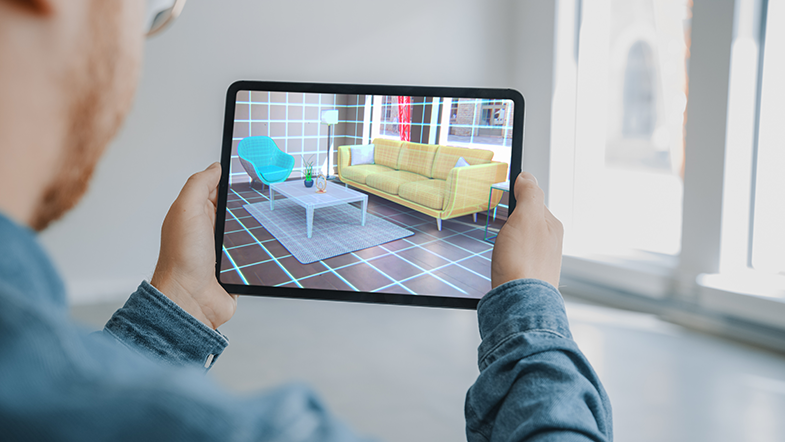Computer Graphics Researcher Creates Simulated Environments to Train AI

Depending on who you ask about computer graphics, they may give you a different definition of the research area. Typically, this area is thought of as the generation and manipulation of images using computers. For computing science professor Manolis Savva, however, this area is the practice of simulating the world.
“It is about having a model for how the world works, looks, moves and how people can interact with it,” he says.
This is an important view when you consider how computer graphics relates to and works with other disciplines, particularly artificial intelligence (AI) and machine learning. By simulating real-world environments using computer graphics, researchers are able to construct a virtual space for testing and troubleshooting systems in isolation, which is ideal for training AI. For example, being able to train autonomous vehicles in a simulated environment is much safer and more cost-effective than beginning the training on real roads.
“Oftentimes there is a gap between how people look at a simulation and try to understand and interact with it, and how an AI algorithm would,” says Savva.
Using simulated environments, Savva is currently conducting research on how to train AI to understand the 3D structures of our living spaces. In other words, he is teaching AI where furniture may be located in a room and how humans may interact different pieces of furniture. This research could be influential in improving AI assistant technologies such as Alexa or Google Assistant. Eventually, training AI in these simulated environments may lead to having assistant robots co-exist with humans in the future.
What Savva thinks this research will be most helpful for, however, is enabling the efficient design and generation of interactive virtual 3D representations of interior spaces and human actions. For example, rather than having artists meticulously design every element in a room for a video game or animated movie, having AI generate these 3D spaces algorithmically could save hours of design work and expand the potential of creatives in these fields. These 3D representations can also be used for AI and robotics research.
This research has gained the attention of others, with Savva being successfully appointed as a Tier 2 Canada Research Chair (CRC) in Computer Graphics. This appointment will provide Savva with the funding and recognition to advance his research and collaborate with other top researchers.
“I feel very fortunate and honoured. It’s not something that I expected so soon in my career,” says Savva on his appointment. “This will bring visibility to the emerging intersection of computer graphics and AI, and hopefully create a platform to connect with other people who have related work from the AI and machine learning perspectives.”
In the immediate future, Savva hopes to reach his research goal of being able to train AI to create rich interactive virtual environments algorithmically. He also plans to continue to work with researchers in AI and machine learning to leverage simulated environments in ways that helps further research in these fields.
Simon Fraser University’s School of Computing Science is mobilizing brilliant minds to create business and societal innovation for good. For more information, visit sfu.ca/csresearch.

